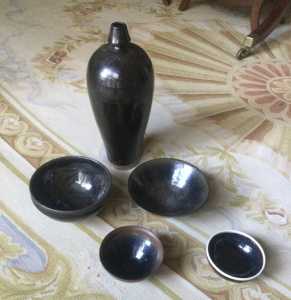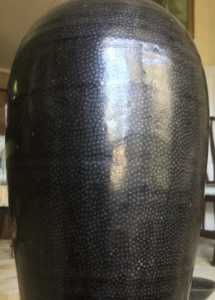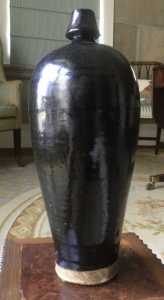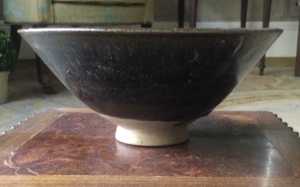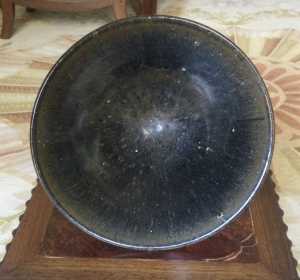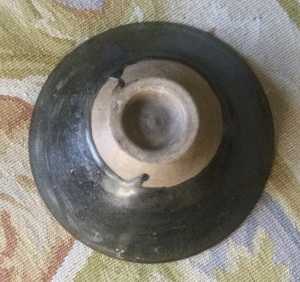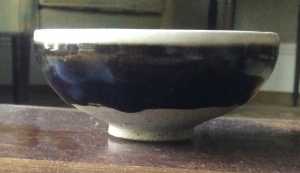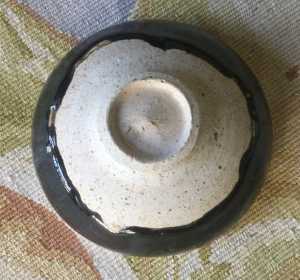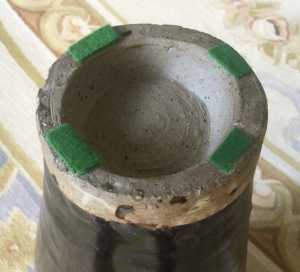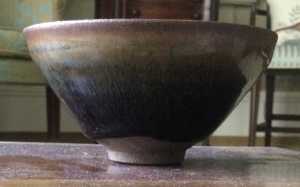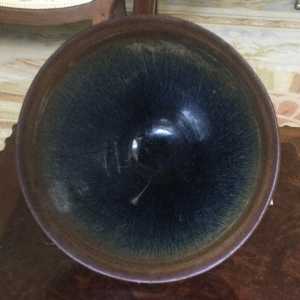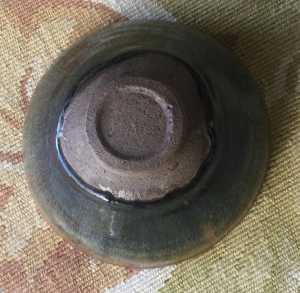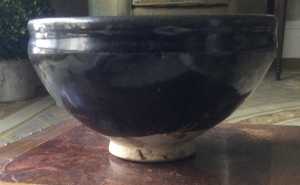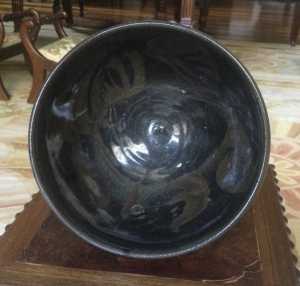The Chinese and Asian Art Forum. For Fans, Collectors and Dealers.
 Basic Rules For the BidAmount Asian Art Forum: Talk about whatever you want. You can even discuss and offer things that are for sale if they are authentic. Maximum image file size per post is 2 MB. Images of 700pxl x 700pxl are optimal if saved at a medium resolution. Be respectful of others and enjoy yourself. Click the YouTube link for a brief tutorial on using the forum. You can also EMBED Videos by cutting and pasting from You-Tube, Vimeo etc.
Basic Rules For the BidAmount Asian Art Forum: Talk about whatever you want. You can even discuss and offer things that are for sale if they are authentic. Maximum image file size per post is 2 MB. Images of 700pxl x 700pxl are optimal if saved at a medium resolution. Be respectful of others and enjoy yourself. Click the YouTube link for a brief tutorial on using the forum. You can also EMBED Videos by cutting and pasting from You-Tube, Vimeo etc.
NOTE: To post an item or add a new post, click open the category title from the FORUM LIST, and CLICK the Blue ADD TOPIC button.
This posting is for Craig. Here is a selection of my black wares bought 25 to 30 years ago.
Specific photos of the jar. The oil spot effect fades in and out across surface of the storage jar.
If actually of the Jin period, then it came from a commercial kiln that produced utility products never intended as collectible artistic items.
If interested, I will be happy to post detailed pictures of the various bowls.
Bill, can you show more pictures of the top right bowl that looks like it's probably conical. Thanks! John
William,
These are very much appreciated, though whenever I bid I lose. That bottle/jar is stunning. I never think of oil spots being so thought out. I love the bowl with the white rim, is it that the glaze receded at the lip or was it "trimmed" not sure the word for it?
Fabulous, and thanks for sharing.
Would you mind showing us the foot of the jar? I'd be interested in seeing it.
Jeremy
Hello William
There is quite a difference in the oil spot glaze produced at the Shanxi kilns and the Jian kilns
Please can you post some photographs of your Jian bowl.
Kind regards,
Jeremy
Rather heavily potted with a hare’s fur effect on the inner surface. Seems too big to be a tea bowl at 7” in diameter.
This type of tea bowl is quite interesting. The white rim is an ‘imitation in glaze’ of a silver band covering the un-glazed rim a finer, more expensive example. After dipping the bowl in a thick black glaze, the potter carefully wiped the black glaze off the rim and then let it dry so that it could be dipped into a white glaze to achieve the effect.
This sits on a rather fine American Federal mahogany table so the felt pads were added by me. Below is some further information from am older post about the bottle.
“In the past I spent time exploring museum web sites looking for similar Jin/Song examples that might show foot details. I have to confess I was hoping to find only one type of foot on these bottles (flat base or recessed base). No such luck! There were examples of both types. Also, since these were common storage bottles there are numerous variations on a theme regarding overall shape. I found an example of a bottle with recessed base and deep foot rim in the Freer Gallery and also another example in the Ashmolean Museum.”
”I want to pass on some additional information regarding these black wares from the best reference work on the subject. “Hare’s Fur, Tortoiseshell, and Partridge Feathers; Chinese Brown- and Black-Glazed Ceramics, 400-1400” by Robert D. Mowry published in 1996.”
“According to the book, my bottle would fall in the category of “Cizhou-Type monochrome-glazed wares” with an opaque grey stoneware body. The glaze on my piece is some variation of an oil-spot glaze. The bottle is definitely hand thrown with little attempt at fine finish. There are numerous small glaze flaws/rough spots. It looks to be the product of a commercial kiln producing utilitarian items. The tiny spots on my vessel do not look like the typical ‘oil spot’ glazes found on the classic Jin tea bowls that have been treasured in Japan since they were originally imported.”
“Nothing that I have read or seen has given any indication that oil-spot glazes would be applied to larger utilitarian or commercial products such as my vessel. I have only seen tea bowls with this glaze and I only actually have ever handled a very small example (under 3” diameter). According to Mowry, this oil spot effect on tea bowls was achieved by first coating the bowl in a layer of dark brown glaze. After it had dried, it was dipped in a more concentrated solution of the same iron-rich glaze. Finally, a solution containing additional iron compounds was brushed on the surface of each bowl before firing to ensure the formation of oil spots.”
“These types of bottles were never considered worthy of collection by the Chinese of the period. It would be as silly as inviting someone over today to view a nice collection of empty gin & whiskey bottles. However, these early utilitarian items started appearing in the antiques market in the first part of the 20th century as they were literally ‘dug up’ because of expanded public works projects. This same type of economic expansion (dams, roads, entire cities) started again in the 1990s and released a huge amount antiquities of the Han, Tang, Song and Yuan periods. Prices collapsed for everything that wasn’t exceptional or rare, so thousand year old items became affordable to mid-level collectors. My bottle was purchased during that era of excessive inventory for these types of antiquities. Because I had my doubts, it has always stayed in the ‘questionable’ pile instead of the ‘for sure’ pile.“
I like the 'oil-spot' meiping. Do you know kiln it belongs to?
I see that a similar vase to yours sold in 2018 which was described as a Cizhou piece,
https://www.liveauctioneers.com/item/67452838_chinese-cizhou-black-glazed-oil-spot-meiping-vase
But I have also seen silvery oil spot glaze as being made in the Shanxi kilns,
Kind regards,
Jeremy
I think my favorite of the group is still the first black ware that I ever purchased from a knowledgeable dealer from Chicago in the 1980s. She was a Chinese lady who had ties to the Hong Kong dealer network. She later specialized in antique Chinese furniture.
The inside, abstract design is fascinating. I wonder if the illiterate potter was imitating calligraphy?
About three years ago, I started to come across these larger items with oil spot glaze in some regional auctions. I had originally gotten my oil spot bottle with no expectation of any great age. It was chosen solely as a cheap example of a Song/Jin glaze type. My interest was peaked and I joined the forum in hope that someone would have some experience with these wares. At this point, the best I can say about the bottle is that I have found nothing physical that kicks it out of the running.
Thanks for visiting "The BidAmount Asian Art Forum | Chinese Art"
If you sell on eBay, or have a shop feel free to post images and descriptions and links.
Check back often for discussion about the latest news in the Chinese art and antique world. Also find out about the latest Asian art auctions at Sotheby's, Christie's, Bonhams and Tajans.
Auction results for: fine porcelain, ceramics, bronze, jade, textiles and scholar's objects. As well as Japanese, Thai, Vietnamese and other Asian cultures.
Thank you,
Peter Combs
Topics and categories on The BidAmount Asian Art Forum | Chinese Art
Kangxi vases, Kangxi dishes and chargers, Kangxi ritual pieces, Kangxi scholar's objects, Qianlong famille rose, Qianlong enamels, Qianlong period paintings, Qianlong Emporer's court, Fine porcelain of the Yongzheng period. Chinese imperial art, Ming porcelain including Jiajing, Wanli, Xuande, Chenghua as well as Ming jades and bronzes.
The BidAmount Asian Art Forum | Chinese Art
A free Asian art discussion board and Asian art message board for dealers and collectors of art and antiques from China, Japan, Korea, Thailand, Cambodia, Vietnam and the rest of Asia. Linked to all of the BidAmount Asian art reference areas, with videos from plcombs Asian Art and Bidamount on YouTube. Sign up also for the weekly BidAmount newsletter and catalogs of active eBay listing of Chinese porcelain, bronze, jades, robes, and paintings.
The art of calligraphy - and for the ancient Chinese it certainly was an art - aimed to demonstrate superior control and skill using brush and ink. Calligraphy established itself as one of the major Chinese art forms during the Han dynasty (206 BCE - 220 CE), and for two millennia after, all educated men were expected to be proficient at it.
The Museum’s collections of Asian art span nearly five millennia and encompass the cultures of China, the Himalayas, India, Japan, Korea, and Southeast Asia. In 2007, the Museum launched an initiative to create dedicated galleries for the collection, beginning with a gallery for the arts of Korea ...
Chinese art is full of symbolism, in that artists typically seek to depict some aspect of a totality of which they are intuitively aware.
China Online Museum is the finest online museum of Chinese art. It features Chinese calligraphy, painting, ceramics, bronzes, carving, and other artworks.
Chinese Ceramics & Works of Art. Overview Upcoming auctions Contacts Auction results ... Christie’s sales of Chinese ceramics and works of art showcase centuries of Chinese history. Held throughout the year in London, New York, Paris and Hong Kong, they attract a wide audience of collectors and connoisseurs vying for pieces as diverse as ...
Explore Asian Art Week. Contact the Specialist Department. Chinese Paintings ... Senior Specialist, Head of Sale. [email protected]. Tel:+1 212 641 5760. Bid in-person or online for the upcoming auction:Fine Chinese Paintings on 10 September 2019 at New York. Bid in-person or online for the upcoming auction:Fine Chinese Paintings on 10 ...
Discover an abundance of must-see art from all corners of a vast continent at Christie’s NY Asian Art Week. From contemporary classical and Chinese paintings to works with exemplary provenance from the Art Institute of Chicago, our Rockefeller Paza galleries will be full of ancient treasures and contemporary masterworks in a salute to the vibrant arts of Asia.
Sold to benefit The Art Institute of Chicago’s Asian Art Acquisition Fund, the sale features 84 lots with a focus on Ming and Qing porcelains, and offers a rare insight into the taste for collecting Chinese ceramics and works of art in the Midwest from the end of the 19th century through the 1980s. Highlights include two Wanli wucai garlic-head vases, a Qianlong mark and period, blue and ...
Specialist, Chinese Paintings, Christie's London Dr Malcolm McNeill is a Specialist in Chinese Paintings at Christie’s, based in London. He previously worked as an assistant curator of the Chinese collections and the Victoria and Albert Museum in London, as a researcher at the British Museum, and as a translator and tour guide at the National Palace Museum in Taipei.
The Christie's Education 2020 Conference: The Chinese Art Market 18 Jun 2019 Christie’s Education is delighted to announce our first international academic conference in Asia which will take place in Hong Kong from 26-27 November 2020 at the Hong Kong Convention and Exhibition Centre and will run in parallel with Christie’s Hong Kong Autumn Auctions.
The summer Chinese Art sale in Hong Kong will feature works of art from several private collections, including Qing porcelains and textile from the collection of the legendary Chinese art dealer A. W. Bahr (1877–1959), fine gilt bronze Buddhist sculptures from an old Hong Kong collection, an East Asian collection of Qing dynasty wine cups and jades, and a Japanese collection of Song ceramics ...
Sotheby's Chinese Works of Art Department holds two auctions each year in London, New York, Hong Kong and Paris.
Chinese Art - View Auction details, bid, buy and collect the various artworks at Sothebys Art Auction House.
With more than 340 Chinese works of art dating from the Neolithic to the Republic periods, highlights of this sale include a selection of Qing Imperial monochromes from the collection of Arnold and Blema Steinberg, early ceramics from the Art Institute of Chicago and Chinese porcelain and works of art from the collection of Henry Arnhold.
Results: Sotheby's Asia Week achieved $52.4 million in six strong auctions, exceeding pre-sale estimates. With 76.5% of lots sold and 60.3% of lots surpassing high estimates, the Asian art sales at Sotheby's indicate continued collector interest in the finest works of art from China, India and and the Himalayas.
Today's sale of Important Chinese Art will proceed as planned with sessions at 10 AM and 2 PM EDT. Sotheby's will be monitoring the weather conditions throughout the day and will be available to coordinate alternative bidding options should conditions make it difficult for clients to attend the auction in person.
Bonhams Chinese Art department is renowned for offering the finest works of art representing the richness and breadth of China's artistic heritage, particularly Imperial porcelain, white and spinach green jades, cloisonné and Buddhist art. Specialised international auctions are held globally, including London, Hong Kong and San Francisco.
Bonhams : Chinese Works of Art We use cookies to remember choices you make on functionality and personal features to enhance your experience to our site. By continuing to use our site you consent to the use of cookies. Please refer to our privacy and cookie policies for more information.
Bonhams Fine Art Auctioneers & Valuers: auctioneers of art, pictures, collectables and motor cars. We use cookies to remember choices you make on functionality and personal features to enhance your experience to our site. By continuing to use our site you consent to the use of cookies. ... Chinese Art (US) General enquiries
Bonhams : Fine Chinese Art We use cookies to remember choices you make on functionality and personal features to enhance your experience to our site. By continuing to use our site you consent to the use of cookies. Please refer to our privacy and cookie policies for more information.
Bonhams Fine Art Auctioneers & Valuers: auctioneers of art, pictures, collectables and motor cars Bonhams : Asian Art We use cookies to remember choices you make on functionality and personal features to enhance your experience to our site.
Bonhams are international auctioneers of fine Chinese and Japanese art. We specialise in rare Imperial and Export Chinese ceramics and works of art, as well as Japanese ceramics, fine and decorative works of art from the Neolithic Period to the 20th century. View on map
Bonhams Fine Art Auctioneers & Valuers: auctioneers of art, pictures, collectables and motor cars. We use cookies to remember choices you make on functionality and personal features to enhance your experience to our site. By continuing to use our site you consent to the use of cookies. ... Asian Art Bonhams. Work. 22 Queen St.
